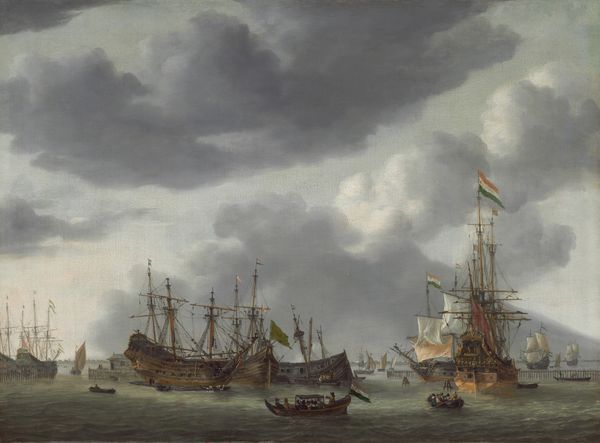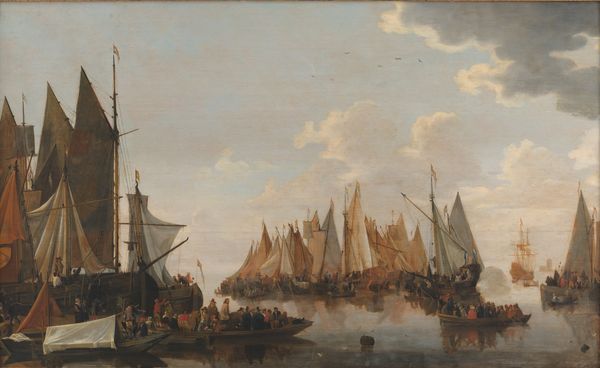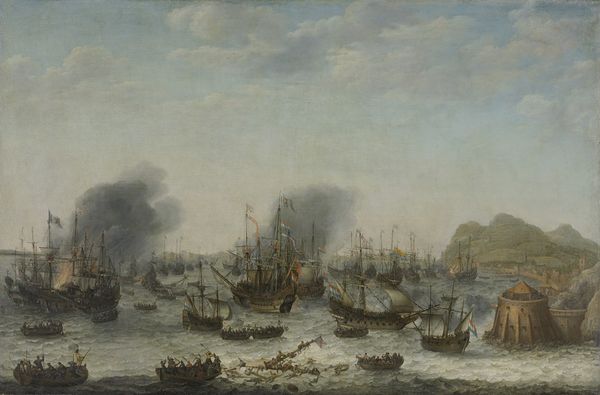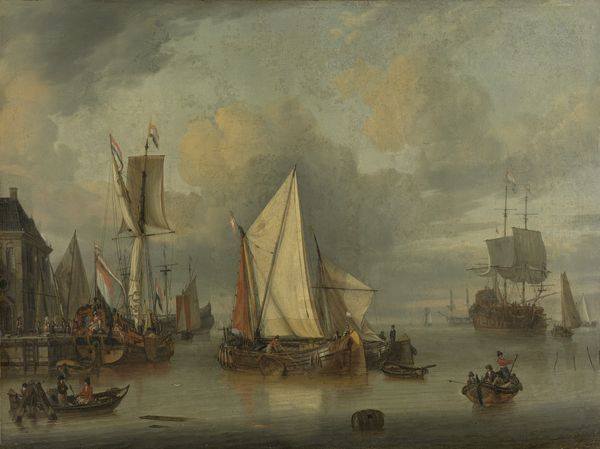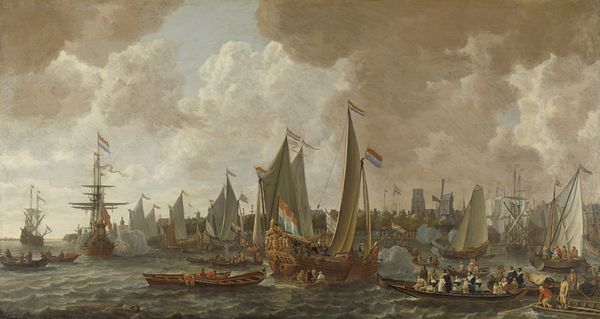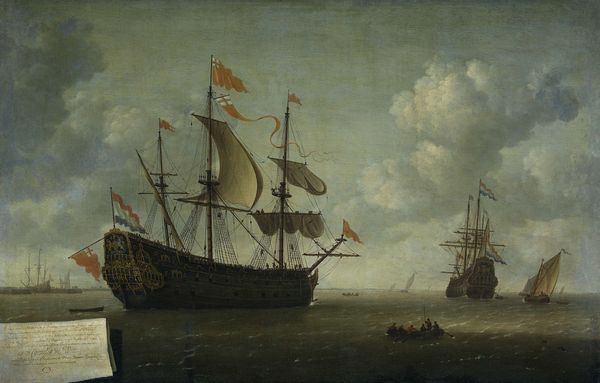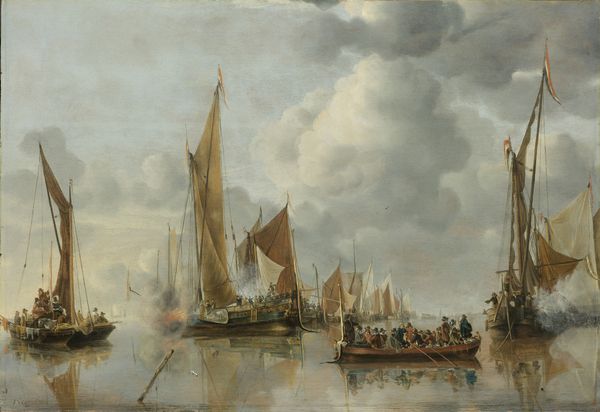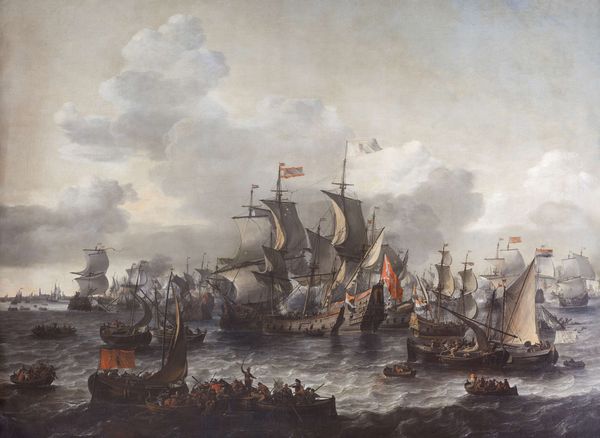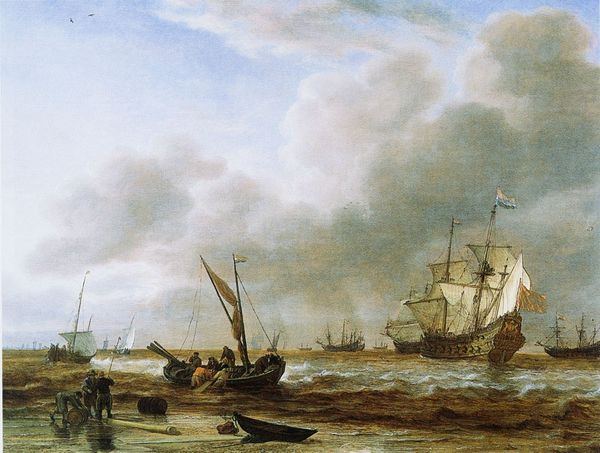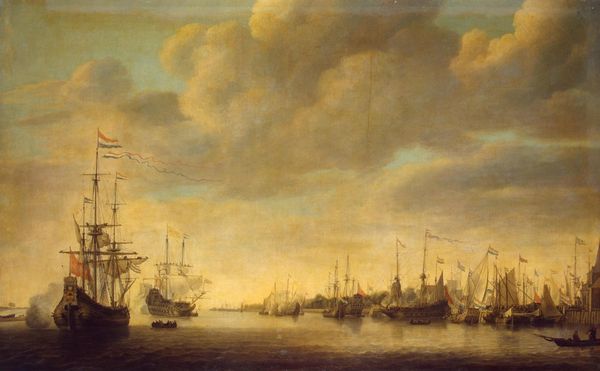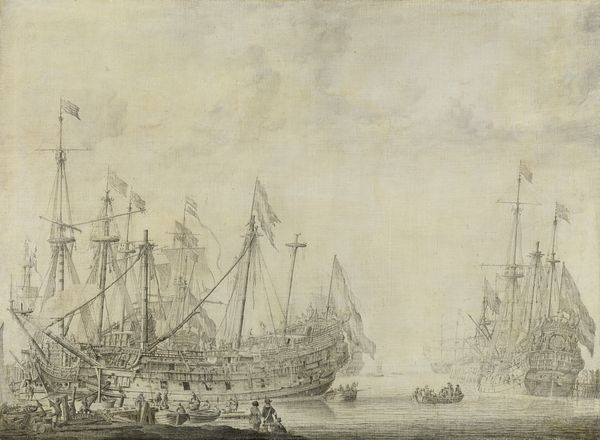
Het kielhalen van de scheepschirurgijn van admiraal Jan van Nes 1660 - 1686
0:00
0:00
painting, oil-paint
#
baroque
#
dutch-golden-age
#
painting
#
oil-paint
#
landscape
#
oil painting
#
cityscape
#
genre-painting
#
history-painting
Dimensions: height 106 cm, width 159 cm, depth 9 cm
Copyright: Rijks Museum: Open Domain
Editor: This painting, "Het kielhalen van de scheepschirurgijn van admiraal Jan van Nes," created sometime between 1660 and 1686 by Lieve Pietersz. Verschuier, depicts a harbor scene teeming with ships and people. There's a strong sense of tension despite the busyness of the port; it's difficult to immediately comprehend. How do you interpret this work, especially given its seemingly descriptive nature? Curator: It’s crucial to look beyond the initial impression and understand this painting within its socio-political context. Keelhauling, depicted here, was a brutal form of punishment. What does it tell us about power dynamics and justice within 17th-century Dutch maritime culture, particularly considering the Netherlands' involvement in colonial expansion and the exploitation of labor? Think about who is being punished and who is carrying out that punishment. Editor: So, it's less a simple historical scene and more a commentary on authority and control? The presence of so many ships, those tools of trade and conquest, becomes more charged. Curator: Precisely. The Dutch Golden Age was built on maritime power, but that power came at a cost. Consider, too, the artist's choice to depict this event. What statement might Verschuier be making by focusing on this particular event within the larger narrative of Dutch maritime success? Editor: I guess he’s making us consider the human cost that's been intentionally or unintentionally left out of these grand stories of conquest, showing the dirty side of all that maritime power. Curator: Exactly. Art like this challenges us to critically examine dominant narratives and understand history through the lens of those who suffered under its weight. How does viewing the painting this way change your understanding of its “mood”? Editor: It shifts everything. What I saw as tension is now active oppression. I had initially overlooked the cruelty inherent in what’s happening on that ship! Curator: Reflecting on how this artwork forces us to confront uncomfortable truths encourages us to become more responsible and discerning viewers. Editor: This conversation opened my eyes. It will never be 'just' a harbour painting now, thank you!
Comments
No comments
Be the first to comment and join the conversation on the ultimate creative platform.
